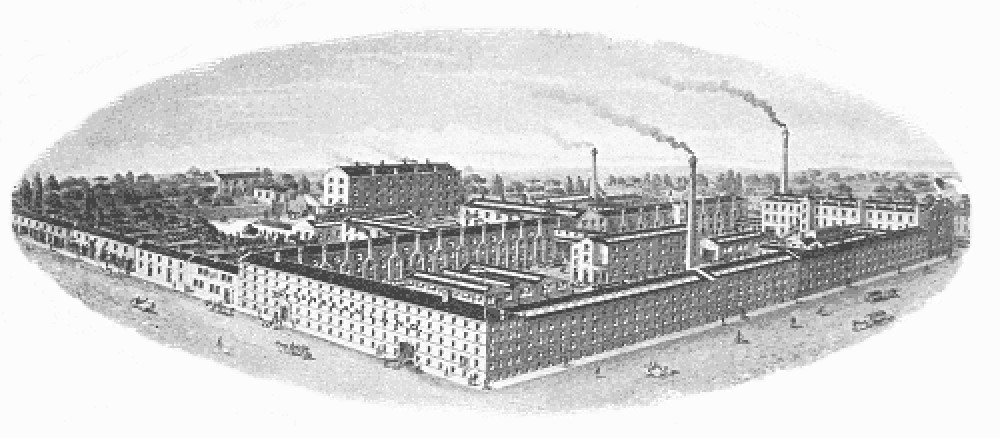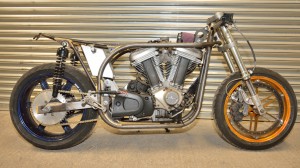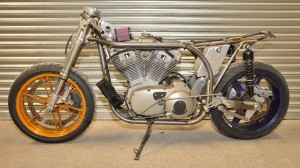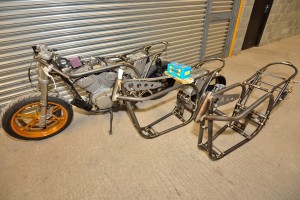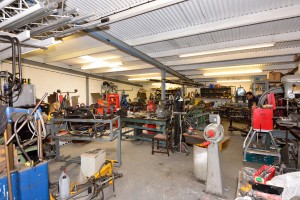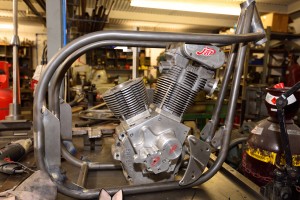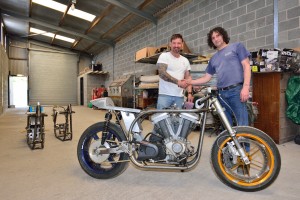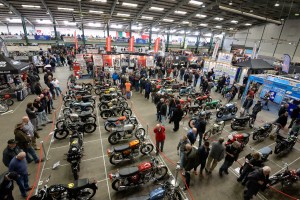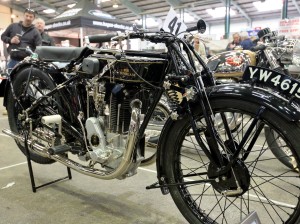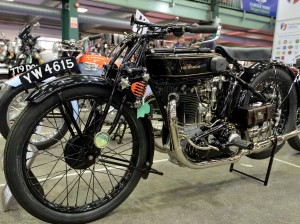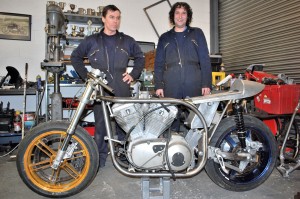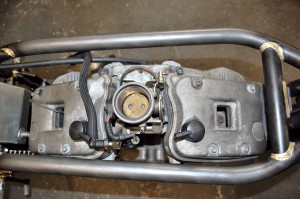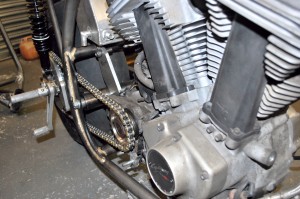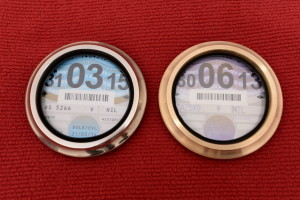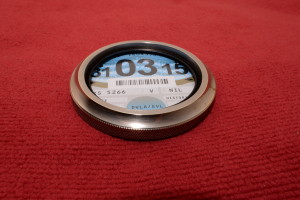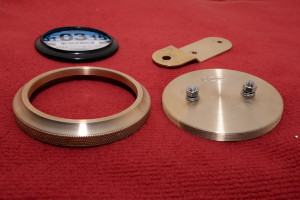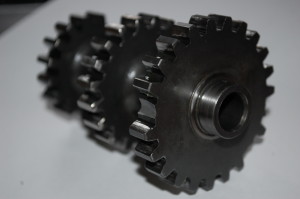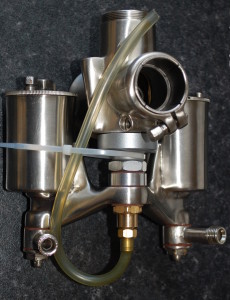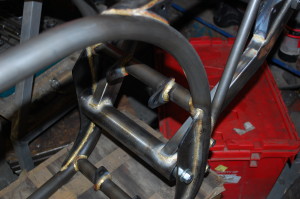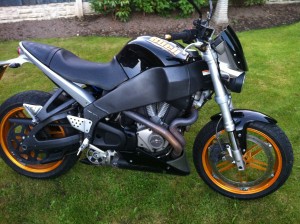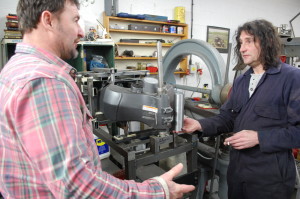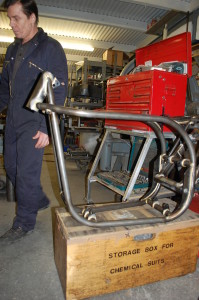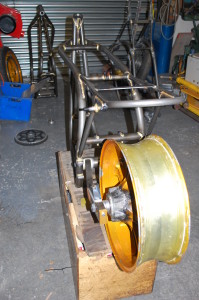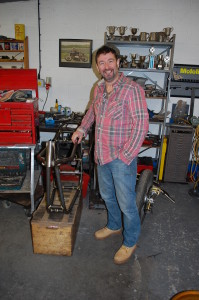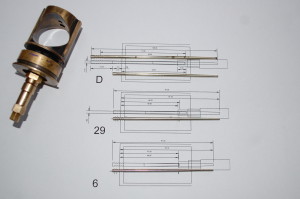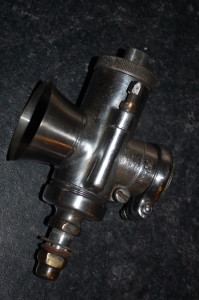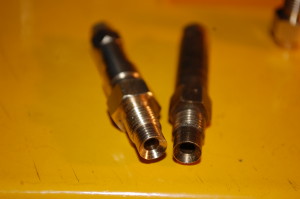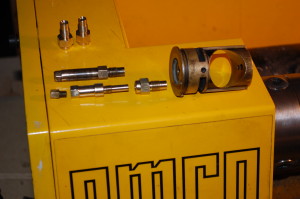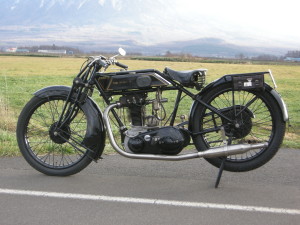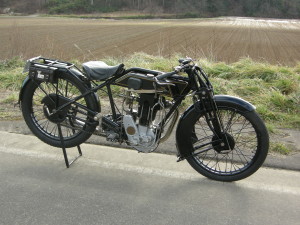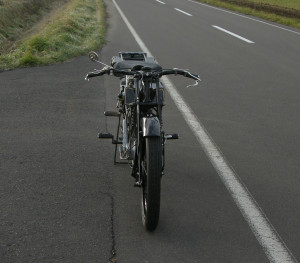Last week Nigel and I had another trip in glorious sunshine across the Welsh hills to check out the latest progress on the Norley framed Buell XB Lightning. And she’s looking good…
Nigel and Paul Brewster of Norley framekits have been developing this individual, unique and one-time only amalgamation of the classic Norton featherbed frame with the engine and running gear from a Buell XB12S Lightning. Norley originally made frame kits to suit Harley engines and their replica featherbed frames are made in-house to exacting standards and quality. These rather special café racers are, in many ways, a Norvin or Ogri bike for the lucky few, if not the masses.
Fitting the XB motor proved more of a challenge than usual as not only is it a stressed member of the original Buell frame but also it was important for Nigel to retain the fat Buell back wheel and tyre. Fortunately, these guys have the experience and technology to address the 1001 issues that are inevitable with any such special build. Their workshop is well kitted with a comprehensive range of lathes, milling machines, jigs, welding and bending equipment. The sort of gear that take a lifetime to amass and an eternity to learn how to use.
Interestingly, Norley also produce frames for other classic recreation companies and are willing to take on, perhaps, even more esoteric frame-engine combinations than Nigel’s own. A featherbed framed JAP anyone? Japton…. Norap… perhaps
Slowly but surely the bike has been taking shape over recent months to the point where it is now ready for exhausts and petrol tank to be manufactured and so, after a cup of tea, the bike was ready to be despatched to the petrol tank guys. The tank will need to be constructed to ensure airflow to the top-mounted airfilter and also provide sufficient clearance for fuel pump, header tank, coils etc. As mentioned before, capacity could well be in pints rather than gallons!
